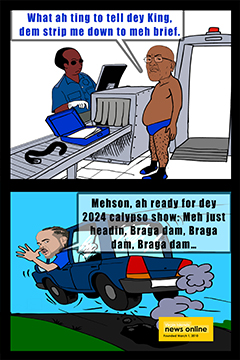Measuring VI indebtedness part 1
Accurate statistics, and sound economic metrics, are critical to engineering economic recovery for the Virgin Islands (VI).
Now a July article in a national online newspaper stated that, ‘’ public debt was three times what was held in the country’s reserve fund.’’
The story further asserted that the matter would be made worse because: ‘’ revenue for 2018 is projected to fall below previous years.’’
The preceding would be the clear outcome of the September 2017 disasters that destroyed the country’s infrastructure.
OK. What struck this economics layman was the ambiguity in that assessment; not to criticize a very well written story.
But, what was the narrative attempting to imprint on to the mind of the reader?
The story was a noble effort of getting Joe Public to better understand the state of the country’s finances.
But what would Joe Public get from telling him that public debt was three times what were held in reserves, apart from some allusion to a problem of indebtedness?
What was the actual public debt figure in hard numbers and how was that debt distributed in terms of who is owed cash by the government?
Debt Load
Within what time periods was the debt to be settled?
And what was to be garnered by stating that the debt load was much higher than the country’s reserves?
Where was that assertion derived? How was it derived? And what was the benchmark figure for asserting the debt was too high? Where was that benchmark derived?
Above all how would a public debt of X affect Joe’s own bottom line in terms of Joe’s standard and quality of life?
The writer was clearly attempting to explain to the public how that debt would impact the economy and families.
But, what did debt of three times the amount in reserves mean?
Finance and economics are very complex subjects: esoteric, even arcane.
And it is critical for everyone, expert and layperson, to understand the level of national indebtedness of the VI at any one point in time; and especially today with the country in an economic recession sourced in a natural disaster.
So why is it of paramount importance to understand indebtedness?
Because, like with any responsible household an understanding of the financial health and indebtedness of the VI, is a snapshot of the country’s ability to pay its way through, in terms of the country’s financial obligations to both lenders and creditors: internal and external.
An accurate assessment of the country’s debt position is a rendition on the economic health of the country, in terms of its ability to grow economically and provide prosperity for its 20-30,000 inhabitants. Or as a Virgin Islands Party politician likes to put it: take the Virgin Islands from ‘’good to great.’’
To be continued
Connect with Dickson Igwe on Facebook and Twitter










.png)

.png)




.png)






















2 Responses to “Measuring VI indebtedness part 1 ”
There is no universal ratio. However, some institutions recommend a 40% ratio for developing countries and 60% for developed countries; a high debt to GDP is not necessarily bad for a growing economy. As such, assuming the VI has a debt load of $125M and a GDP of $1B its debt/GDP ratio is approx 13%; this figure is well within the recommended 40%. Nonetheless, though it is within the recommended % does not mean it can afford or should borrow money. That said the territory is in a recovery mode and needs to borrow money. Thus, it must effectively plan, programme, budget and execute its recovery needs for the long-term, acquiring value for money. The need to borrow will increase the debt load and the debt to GDP ratio. Moreover, a reserve fund of 4-6 months of normal operating expenses is critical and vital for emergencies, ie, Hurricanes Irma and Maria.